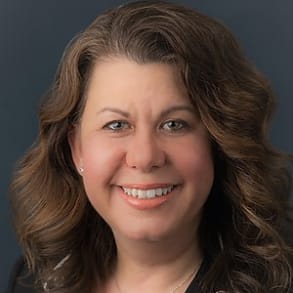Johns Hopkins rheumatologist Lisa Christopher-Stine shares what is known about how the disease processes of cancer and myositis intertwine. It has been known that certain types of myositis, such as dermatomyositis, increase the risk of cancer, and certain auto antibodies such as nuclear matrix protein 2 (NXP2) or transcription intermediary factor 1 (TIF1) gamma confer a higher risk for cancer. More recently, experts at Johns Hopkins have identified two additional antibodies that seem to modify the risk for developing cancer, even among those who seem to be at the highest risk of developing it. Christopher-Stine breaks down what this means for patients and their treating physicians.
I'm Lisa Christopher Stein, the Johns Hopkins Miacis Center, co founder and director. Today, we'll talk a bit about our increasing understanding of the role of cancer and myositis. We've long known about the role of cancer and myositis since the early 19 hundreds. But in today's day, we are developing more precision to understand exactly how these two processes intertwine. In recent years, we have recognized that certain types of myositis such as dramata myositis increase the risk for cancer, say, versus other types of myositis like inclusion body myositis, polymyositis, the anti synthese syndrome or immune mediated necrotizing myopathy. Furthermore, we have now understood that certain auto antibodies confer an even increased risk. For example, among patients with dermatomyositis, those with certain auto antibodies such as NXP two or TIF one gamma are known to have an increased risk for cancer. There are additional modifying factors such as older age or being a man, for example, that confer a greater risk still. But what we didn't really understand is that despite having these auto antibodies, why do some patients develop cancer? And most actually do not trying to understand the precision and counseling our patients. And most importantly, if there were a tumor to develop, finding it early and working with our oncology partners would be of utmost importance we understand. Now, with work from two groups at Johns Hopkins, that two additional auto antibodies seem to modify the risk for cancer. Even among those patients who might carry the highest risk. Let's break that down. So we talked about patients with TIF one gamma auto antibodies. Those patients have the highest risk among our dramatis patients for cancer. But two modifying auto antibodies that too something called C car one and another called transcription factor. Sp four are telling us a little more while these auto antibodies are not commercially available today. Hopefully in the future, they can help guide care. What does that look like? One can imagine that a patient with TIF one gamma has a certain chance of cancer, but we know that if they carry TIF one gamma antibodies in addition to C car one auto antibodies and even further auto antibodies with different specificities, the chance for cancer goes down the hypothesis then is that the more auto antibodies a patient develops with myositis, the less chance they have of cancer that lends to the hypothesis that the immune system is providing one of the most important and potent anti tumor responses we know. So this is the idea of three es either escape il or elimination in the escape mechanism. This allows cancer to escape the immune response. And cancers are often found unfortunately at a later stage and confer a worse prognosis in the middle equilibria. Cancer and myositis are often found together, but often that cancer is at a less severe stage and can be modified. Finally, in elimination, the best case scenario, the immune system does its job and eliminates the cancer. So, while we see the autoimmune disease, we do not see cancer concomitantly. Additionally, the transcription factor sp four antibody has shown us that in combination with TIF one gamma, the chance of cancer is extremely low. But in the future, it is my hope and the hope of other rheumatologists and neurologists that treat myositis, that we can precisely counsel our patients and reassure them when and if they will develop cancer and most importantly, modify or mitigate that risk if we know early. Thank you so much for your time. It's been a pleasure.



